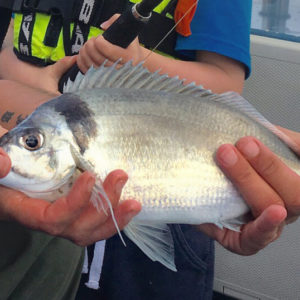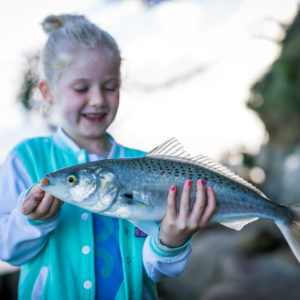Stories of tussling with bluenose as big as our grandfather’s dreams were common in days past. And bluenose recipes to delight the taste buds of everyone around the table were passed down through the generations. As stocks decline bluenose have retreated to small pockets of abundance, limiting our chances of getting a feed and consigning grandma’s recipes to the shelf.
Returning to base with nothing but bruises from hauling up sharks is now commonplace, despite technology advances. This is not acceptable and we must act before our bluenose fishery becomes another that falls off the cliff.
Bluenose is one of many stocks introduced into the Quota Management System (QMS) in 1986 with the intention to control catch and rebuild depleted fisheries. Since then, the Total Allowable Commercial Catch (TACC) has never constrained commercial bluenose catch, in fact the national TACC more than doubled between 1986 and 2004 under the guise of an industry controlled regime called the Adaptive Management Programme.

By 2010 depletion could no longer be ignored. In 2011 the Minister agreed to a rebuild plan that required annual TACC reductions from 2011 to 2013. However, by 2013 commercial interests successfully convinced the Ministry and the (then) Minister Nathan Guy that the fishery was rebuilding, catch rates were improving, and they would commit to developing better fishery monitoring tools. The Minister swallowed the bait and only two of the three reductions were ever applied.
A 2016 fishing industry column demonstrates their uncaring attitude towards our bluenose stocks, “After several years of declining CPUE [catch return effort] across BNS [bluenose] stocks up until 2011, MPI consulted on reducing the combined BNS TACCs from 1,100 tonnes to 620 tonnes. We have successfully avoided these TACC reductions for several years and maintained the BNS TACCs at 1,100 tonnes”.
In other words, ‘we have successfully convinced the Minister not to make any cuts so we can keep exploiting this resource’.
“We have successfully avoided these TACC reductions for several years”
2016 fishing industry column
Later in 2016 further TACC cuts were proposed because the fishery was well below the MPI-default management target size of 40% of unfished biomass, B40.
During the 2016 review, our New Zealand Sport Fishing Council fisheries team strongly argued for MPI’s most conservative option 3, a 40% TACC reduction, noting that “Bluenose has all the characteristics of an overexploited stock in need of rebuilding. Rebuilding long-lived, low productivity stocks is a long game requiring aggressive catch reductions to allow older fish to become more common in the population”.
The team also acknowledged TACC cuts would likely cause “some hardship, but the catch curve [history] informs us that many millions of dollars have been earned while fishing down the stock and now a strong rebuild plan is required”.
MPI went into bat for commercial interests by recommending a 20% reduction on the basis that option 3 “will have serious socio-economic impacts” and that there would be “impacts on industry’s monitoring and data collection programme”. The Minister agreed.
Once again, the economic impact on the commercial sector alone has been used to defer rebuilding a depleted stock.
It’s 32 years since the QMS was introduced and bluenose are still depleted. The promises of better monitoring and independent data remain unfulfilled. We need a truly world leading management system to care for our fish stocks, and the QMS is not it.





